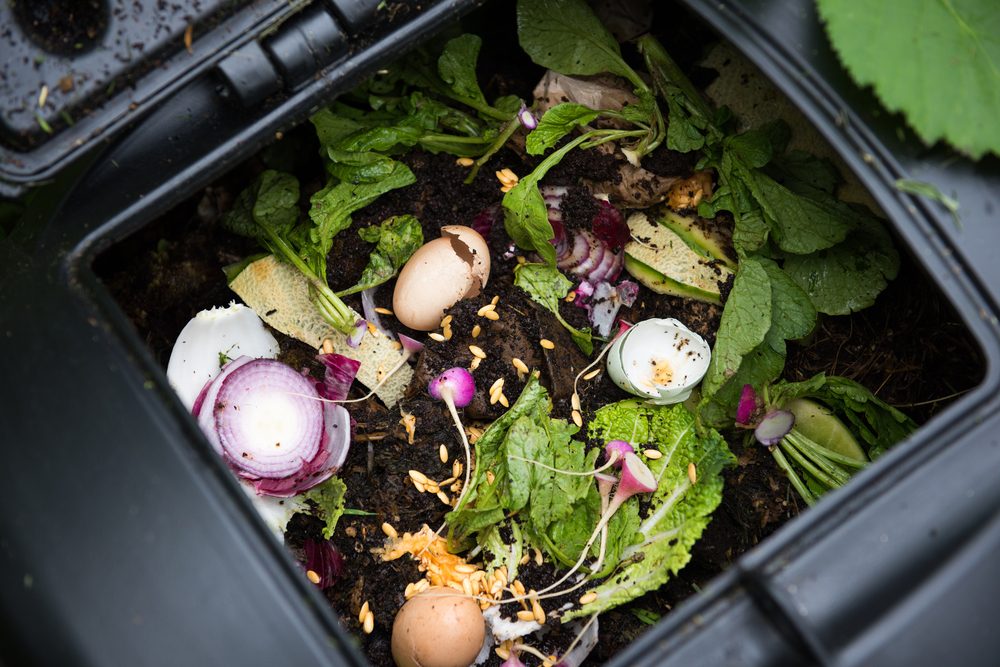Your kitchen trash is already full of vegetable scraps, eggshells and fruit peels—go ahead and learn how to compost at home! One writer breaks the process down.

I Started Composting at Home—Here’s What Happened

You may not believe it, but 1.3 tons of food are wasted around the world each year, with fruits and vegetables going to waste the most. For any member of the “clean plate club,” that’s a serious disappointment! I love the thought of composting because it’s good for the Earth, but it’s also a smart way to turn smelly food scraps into organic nutrient-rich soil, either for planting produce or flowers.
Composting for the First Time
You can actually compost so much more than just fruits and veggies! There were so many things I didn’t know about before I got started. I used these guidelines:
What Can You Compost?
- Fruits and veggie scraps
- Tea leaves, tea bags, coffee grounds
- Dead flowers, old potting mix, grass cuttings, weeds, leaves
- Used vegetable cooking oil, egg shells
- Vacuum cleaner dust, including pet hair
- Old newspapers (wet), wood ash, sawdust (not from treated timber)
What Can’t You Compost?
- Meat and dairy products, fat, bread or cake
- Metals, plastic, glass
- Animal manure, bones
- Magazines, sawdust from treated timber
- Weeds with seeds, large branches, diseased plants
My Takeaways
I thought before starting my experiment that I was already mindful about my food waste. I buy small amounts of produce at a time that I know I can eat before they go bad. I meal-prep regularly, but as a vegan, my trash can is chock-full of banana peels and avocado skins that could be re-purposed into something more. Here’s what I learned.
Consider Your Space
Composting might not be ideal when you’re in a small-ish apartment or condo without an outdoor space. Our apartment is spacious, but I still wanted to be mindful of my two roommates who didn’t partake in the experiment. (Some people may not want decomposing fruits and veggies in the kitchen).
Overall, this wasn’t easy to do without a patio or backyard. Since I live in an urban environment, and won’t grow much more than an easy herb garden, I also don’t have use for the superfood soil that I produced. It might make more sense for me to look into another option for my scraps, like a compost pick-up service.
Find a Drop-Off Center
If you don’t have a nice-sized outdoor space where you can store your composting long-term, but still want to make a difference, find a composting facility near you that you can bring your scraps to. Right now, this is what I’ll be doing until I move into a house with a garden!
Get a Bin or Bucket
I’d recommend investing in a bin or tumbler (like this one) to collect your scraps that’s weather-proof for outdoor storage. There are so many sizes available to fit your family and needs, whether you’re in an apartment with limited outdoor space, or have three kids with more food waste plus outdoor waste like grass clippings and weeds. It’s also nice to have a handy compost container to keep on your counter.
More Ways to Conserve
I’ve discovered there are many ways to be a more eco-friendly cook, and that compost is only one part of the solution. To get started, you can monitor your refrigerator and whip up recipes that use leftover ingredients. When you’re feeling really adventurous, go ahead and try all the ways to go green in the kitchen!
















